Manufacturing of metal shelving

The shelving unit is a simple and convenient solution for your home, garage or office. The design will help to put things in order by putting things on the shelves. To do this, it is not necessary to make a purchase; it is quite an affordable option to assemble a rack with your own hands.

Tools and materials
The product can be based on one of the many materials on the market. Each of them has a set of positive aspects and disadvantages. To make a choice, you need to understand what influences and environmental conditions the product will be exposed to.
- Aluminum profile. Making a rack from an aluminum profile has more advantages for home use. This is due to the lightness of this material, which allows, if necessary, to easily move the finished section.
Do not forget about the softness of such a profile, which makes it impossible for the shelves to be heavily loaded.
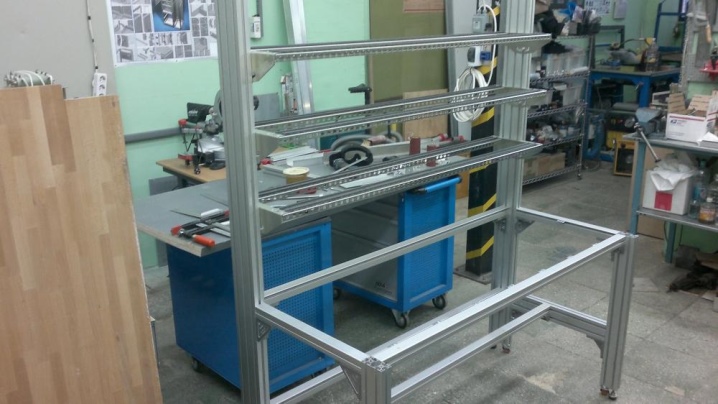
- Profile pipe. Such material can withstand high loads, it is strong and durable. The disadvantages of metal pipes include little functionality. When manufacturing, it is worth immediately determining the distance between the shelves, since in the future their adjustment will not be available.
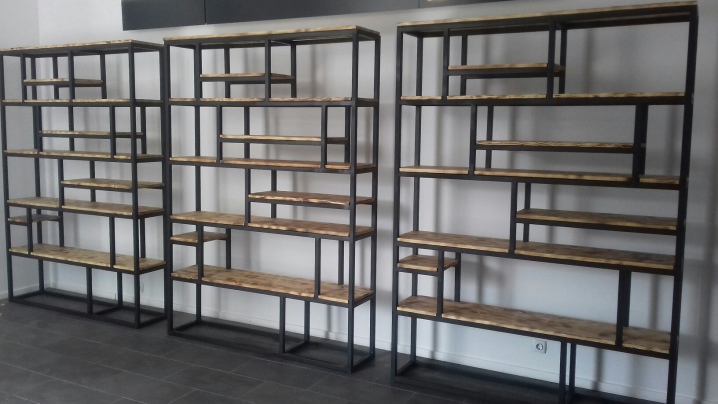
- Perforated corner. Perhaps the most convenient, durable and stable option from a metal profile. The material from the perforated corner contains holes already prepared by the manufacturer, which minimizes the need for additional equipment and makes assembly easy and fast.
When buying, the best choice would be a profile made of galvanized material. Zinc coating increases the strength of the finished product, gives maximum resistance to corrosion and mechanical damage.
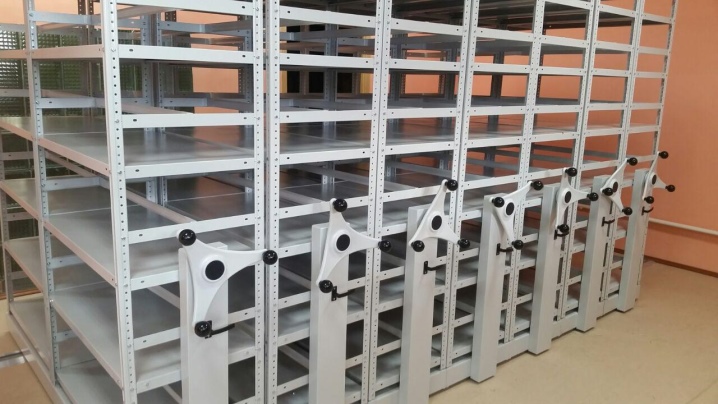
Shelves can be easily made of wood and reinforced with reinforcement. Making metal shelves at home is not a very practical idea. Sheets of metal are a costly solution, which ideally needs to be equipped with an additional stiffener, since they are very thin. Otherwise, with a high degree of probability, such shelves will quickly bend and become unusable.

Another option would be to buy ready-made parts from the store. Such shelves will cost more than a homemade design, but, as a rule, they have a powder coating, which is less prone to scratches and chips in use.
To carry out the work, there is a need for additional equipment. From the general inventory you will need:
- brush;
- dye;
- corner for accurate marking;
- level;
- roulette;
- pencil or marker.

During assembly and subsequent installation, depending on the material, different tools may be required:
- when assembling from a perforated corner, only a set of fasteners, nuts, bolts and a wrench or pliers are needed;

- when working with a profile pipe, you will need welding, electrodes, a grinder;
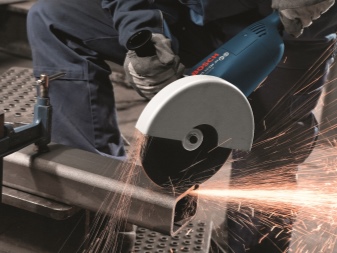

- using aluminum at the base of the product, for work they take a screwdriver, self-tapping screws, a grinder or a hacksaw for metal;

- for the manufacture of shelves from wood, a hacksaw or an electric jigsaw is enough.

Drawings and dimensions
To create a drawing, you need to decide for what needs the rack will be used. Lightweight material such as aluminum is ideal for seedlings. Thus, welding can be dispensed with. If the installation will take place for the needs of the garage, then it is better to weld the structure from the pipe. Welding seams can withstand quite a lot of weight, such shelves are well suited for storing heavy tools and other utensils.


A beautiful and practical solution for the house will be a metal frame for drywall. The finished frame is sheathed on top with plasterboard. This solution turns out to be quite strong and will fit well into the home interior.
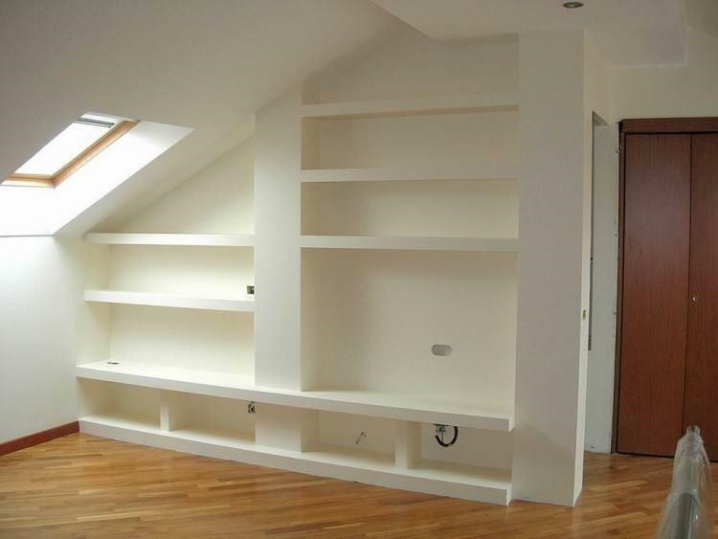
Having decided on the choice of material and having prepared the necessary tools for its processing and assembly, you need to make measurements, and on their basis create a sketch. Consider carefully the dimensions and number of shelves for the future installation. To do this, at the intended place, take all measurements of the area under the structure using a tape measure. Knowing the area for the product, determine the correct size for the racks, shelves and the distances between them. Draw up a diagram of all measurements on paper, rely on it when assembling.
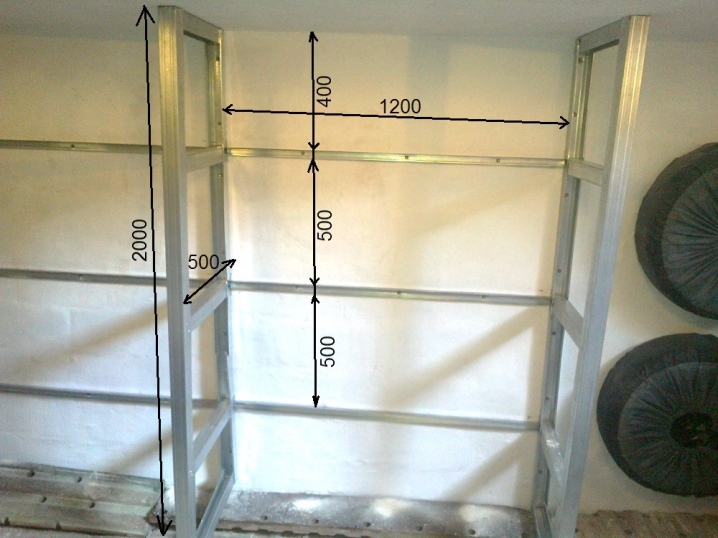
Step-by-step instruction
Making metal shelving with your own hands is not a particularly difficult process if you do everything correctly and follow the instructions exactly.
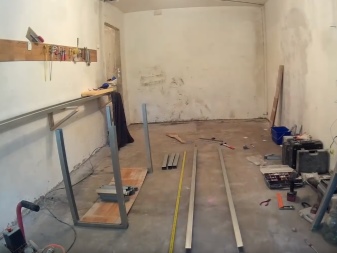

Assembling the frame
The frame is of 2 types: collapsible (bolted) and made by welding. As examples, consider the assembly of racks from a profile pipe and a perforated corner. The main requirement when using a profile pipe is the presence of a grinder and a welding machine. If you have such tools at hand, you can safely get to work.
- Based on the drawing made earlier, we measure and mark the required size for the racks, shelves and joints.

- With the help of a grinder, we cut off the pipes for racks and connections in the form of jumpers at the marks.

- When joining pipes by welding, use an angle. He will help you not to be mistaken and will be the guarantor of the absence of distortions.

- Weld the transverse jumpers to one of the racks; fixing the structure. On the other side, weld one more post.

- Repeat with the 2 remaining racks.

- Before assembling the structure, process the welded seams with a grinder grinder or a file.
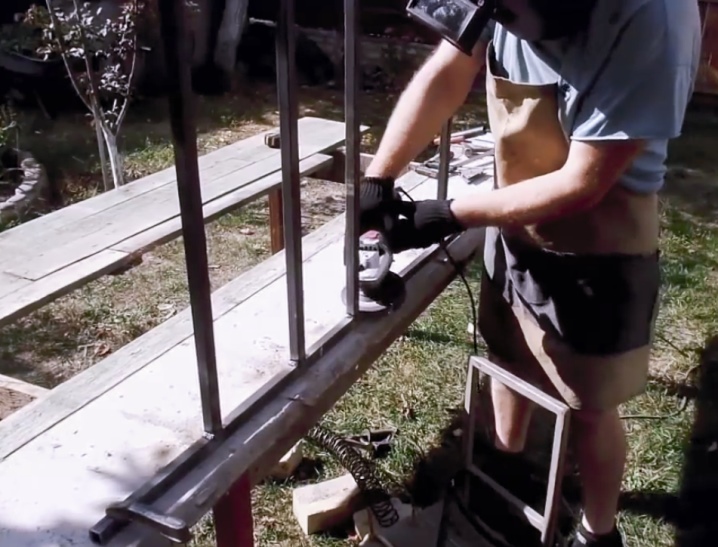
- For the manufacture of fasteners, you can use small metal plates in which you need to drill a couple of holes for self-tapping screws. Weld iron plates to the bottom of the uprights for better stability.

- Connect the 2 large parts obtained together by welding the longitudinal jumpers.

The product from the corner is easy to assemble, it is well suited for installation on a balcony due to its low weight. You need a minimum of tools for assembly in the form of a wrench, a set of fasteners, screws, bolts and a grinder. Instead of a grinder, you can use a hacksaw for metal.
- According to the drawing prepared in advance, we make the markup of the material.
- Cut off the required length for the racks and connections.
- We fasten the racks and jumpers to each other using special fasteners and bolts. We twist it with our hands, leaving the structure slightly mobile.
- Level all connections. When there is no doubt about the unevenness of the rack, you can thoroughly tighten the bolts with a wrench to the end.
- We install thrust bearings on the ends of the racks. Such parts are sold in hardware stores. They will protect the surface from scratches when moving and operating the sections.
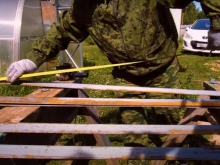

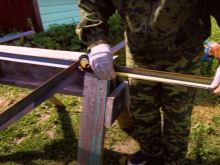
Finishing
The final stage of assembly is finishing, painting and installing shelves. To paint the case, use a paintbrush and metal paint.

Saw the prepared wooden sheets according to the previously applied markings. This can be done with a jigsaw or a saw. After the structure is completely dry, fix the finished shelves with self-tapping screws on the prepared fasteners.

Recommendations
Having chosen high-quality materials, it will not be difficult to assemble racks at home. Prefabricated products will cost significantly less than factory models, but at the same time they will not be inferior in quality and functionality. The implementation of the recommendations will allow you to modernize, strengthen and extend the service life of such a homemade structure.
- When choosing a material, you should pay attention to its dimensions. If the shelving is being installed in a small room or garage, it is good practice to mount it to the ceiling. This move, due to the height, compensates for the lack of space, allows you to slightly shorten the shelves.
- If traces of rust were found on the material during assembly, do not be lazy and sand the places with sandpaper. This will guarantee a long shelf life.
- At the finishing stage, painting is an important point, especially if the product will be in high humidity conditions. In the absence of a protective paint layer, the structure can quickly rust and become unusable. Use a soft paint brush to apply the paint in a neat and even layer.
- When creating a marking of the distances between future shelves, think carefully about this stage. You can make the shelves of various heights depending on their purpose. Sometimes several small shelves will be more effective than one large one.
- To increase the stability of the corner shelving, you need to attach the rear uprights to the wall. This will give additional stability and will not allow them to roll over under heavy load. Another way of strengthening is the installation of a reinforcement structure under the shelves.
To do this, the fittings are cut with a grinder and welded to the side jumpers. This method allows you to significantly increase the carrying capacity of the shelves.

How to make a metal rack from a profile pipe with your own hands, see the next video.













The comment was sent successfully.